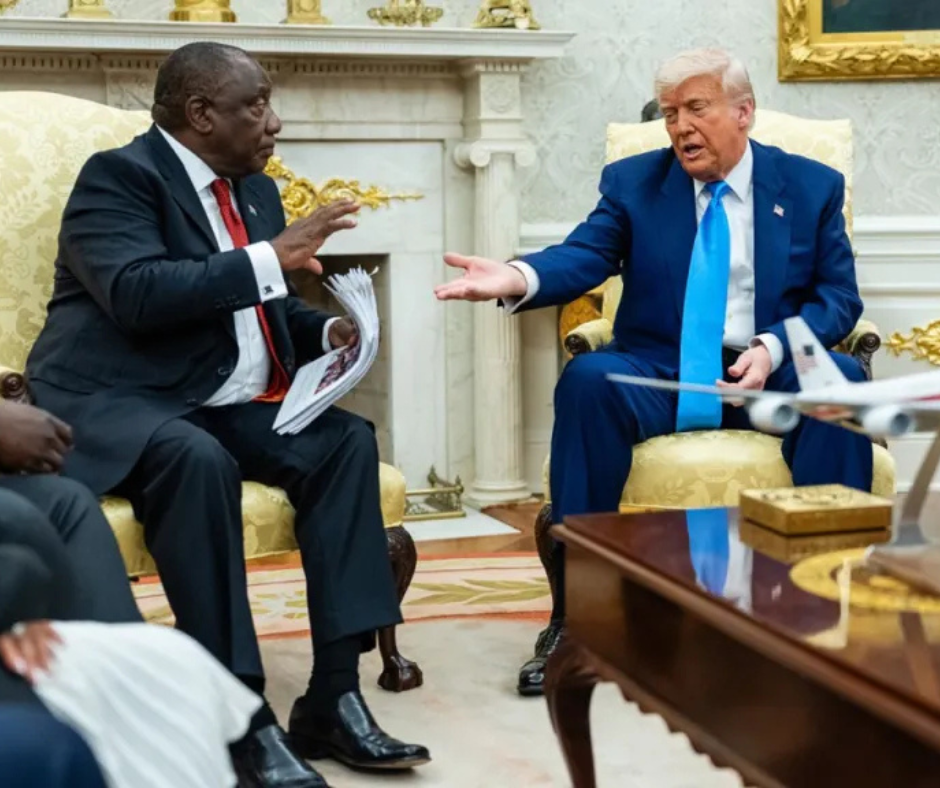Neutral Eyes on a Global Stage
Weaponizing Rhetoric: A Flawed Strategy
But the strategy relied more on shock value than on substance.
The chant, while provocative and deeply unsettling to many, originates from apartheid-era protest language and was revived by a minority party, the Economic Freedom Fighters (EFF), known for its radical rhetoric. President Ramaphosa directly addressed this, clarifying that such views do not represent official policy and that the EFF's right to express them, however controversial, is protected under South Africa’s democratic constitution.
This moment exposed a deeper tension in the conversation: the selective framing of free speech. Controversial rhetoric in South Africa is condemned as criminal incitement, while similarly provocative speech in the U.S. is often shielded by constitutional protections. Ironically, Donald Trump followed by saying that such statements would lead to arrests in the U.S.—an odd remark in a country that proudly defends free speech through its First Amendment, even when that speech is offensive or divisive. The contradiction only highlighted how selectively freedom of expression is interpreted, depending on who’s talking and what narrative is being pushed.
Farm Murders in Context
Let’s look at the actual numbers:
The chant was revived by Julius Malema in 2010. Since then, it has been used more as a political provocation than a literal call to violence (Mail & Guardian, 2011). We can debate the morality of that, but the numbers do not support the claim that it is a driving force behind farm murders.
The Deceptive Mass Grave Image
Fact: that video was from a protest installation staged after the murder of two individuals. Real grief, yes, but not a real mass grave (News24 Fact Check, 2022).
When Ramaphosa appeared confused about the footage, some saw ignorance. But it turned out to be accuracy. There was no mass burial site. Trump’s use of that footage was not just misleading, it was deeply disrespectful, to truth, to those who have lost loved ones, and to anyone seeking honest debate.
Debunking the White Genocide Narrative
Let’s be clear: genocide, by definition, is the intentional, systematic extermination of a racial or ethnic group (United Nations).
That is not what’s happening in South Africa.
Farm murders, tragic as they are, make up less than 1% of the country’s total homicides. The majority of victims are not white. The narrative of “white genocide” collapses under broader statistical context (Africa Check, 2023). You can make anything look like a crisis if you ignore everything else.
Gaza: A True Case of Modern Genocide?
While some cry “genocide” in South Africa, where the data clearly disproves it, a real genocide is unfolding in Gaza.
Since October 2023, over 100,000 tonnes of bombs have been dropped on Gaza’s 360 km², resulting in a bombing density of approximately 278 tonnes/km². For comparison, during eight years of U.S. bombardment over Vietnam from 1965 to 1973, the bombing density was around 8.2 tonnes/km². This means Gaza has endured a level of concentrated aerial bombing that is more than 33 times greater than what Vietnam experienced, making it the most heavily bombed territory per square kilometer in modern history.
In under two years, more than 62,000 Palestinians have been killed, and nearly 70% of Gaza’s buildings, including hospitals, homes, and schools, have been destroyed (Amnesty International, BBC, 2025).
If we are going to talk about genocide, this is what it looks like.
If someone truly believes that South Africa’s situation qualifies, then by that same logic, Gaza is the most undeniable genocide of our time. Yet tens of thousands are slaughtered and displaced in silence, while Western leaders focus their moral outrage on a disproven narrative, often while directly funding the larger crisis.
Let’s Ground Our Beliefs in Reality
So step back. Look again.
Ask yourself: am I echoing what I want to believe, or am I basing my views on actual evidence?
Truth doesn’t need to shout. But when it speaks, we owe it to ourselves, and to each other, to listen.

